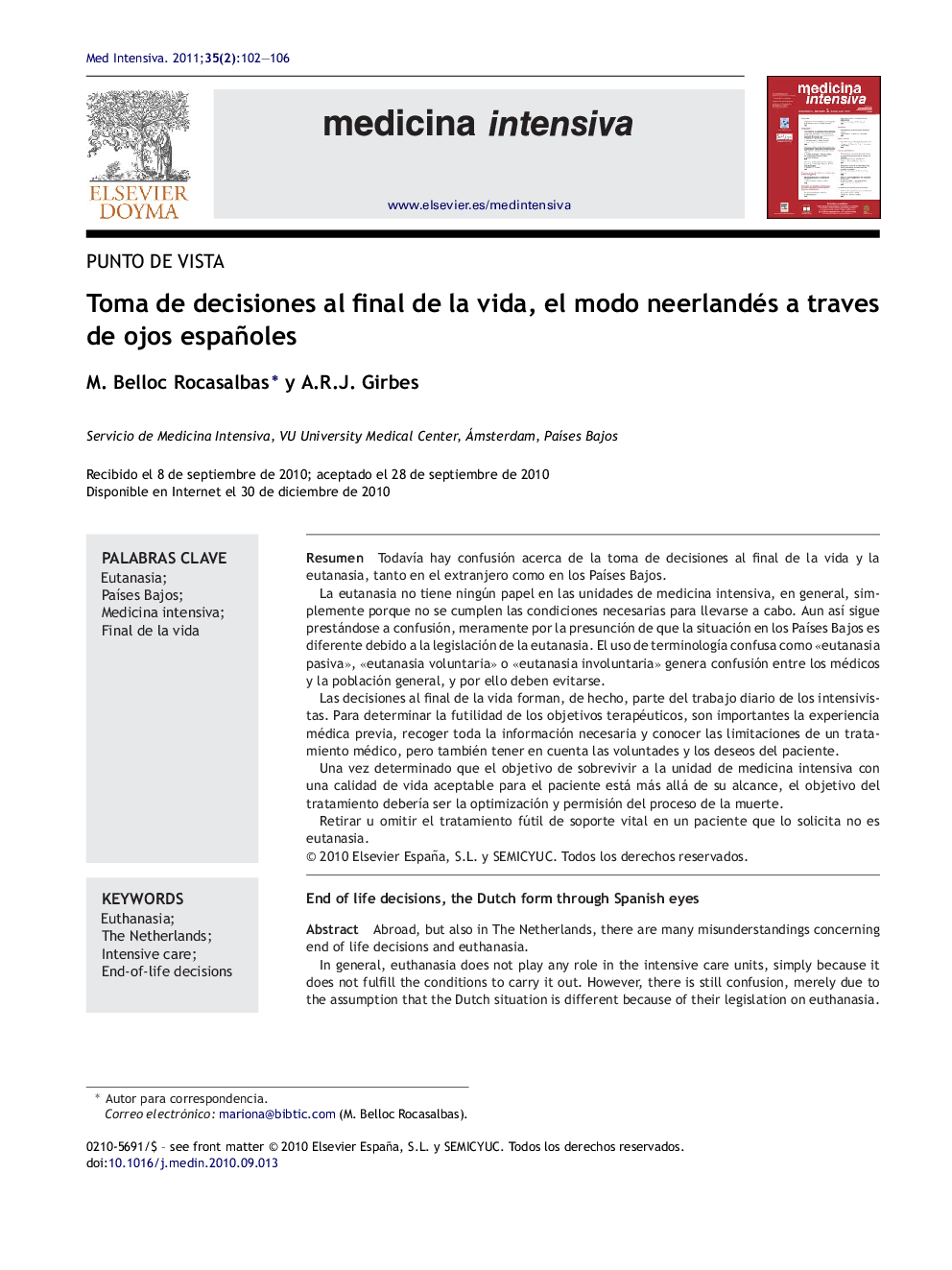| کد مقاله | کد نشریه | سال انتشار | مقاله انگلیسی | نسخه تمام متن |
|---|---|---|---|---|
| 3113484 | 1192381 | 2011 | 5 صفحه PDF | دانلود رایگان |

ResumenTodavía hay confusión acerca de la toma de decisiones al final de la vida y la eutanasia, tanto en el extranjero como en los Países Bajos.La eutanasia no tiene ningún papel en las unidades de medicina intensiva, en general, simplemente porque no se cumplen las condiciones necesarias para llevarse a cabo. Aun así sigue prestándose a confusión, meramente por la presunción de que la situación en los Países Bajos es diferente debido a la legislación de la eutanasia. El uso de terminología confusa como «eutanasia pasiva», «eutanasia voluntaria» o «eutanasia involuntaria» genera confusión entre los médicos y la población general, y por ello deben evitarse.Las decisiones al final de la vida forman, de hecho, parte del trabajo diario de los intensivistas. Para determinar la futilidad de los objetivos terapéuticos, son importantes la experiencia médica previa, recoger toda la información necesaria y conocer las limitaciones de un tratamiento médico, pero también tener en cuenta las voluntades y los deseos del paciente.Una vez determinado que el objetivo de sobrevivir a la unidad de medicina intensiva con una calidad de vida aceptable para el paciente está más allá de su alcance, el objetivo del tratamiento debería ser la optimización y permisión del proceso de la muerte.Retirar u omitir el tratamiento fútil de soporte vital en un paciente que lo solicita no es eutanasia.
Abroad, but also in The Netherlands, there are many misunderstandings concerning end of life decisions and euthanasia.In general, euthanasia does not play any role in the intensive care units, simply because it does not fulfill the conditions to carry it out. However, there is still confusion, merely due to the assumption that the Dutch situation is different because of their legislation on euthanasia. The use of the unclear terminology such as “passive euthanasia”, “voluntary euthanasia” or “involuntary euthanasia” contributes to the confusion of lay people and physicians, and should therefore be avoided.End of life decisions in intensive care patients are in fact a structural part of work of intensivists. Collecting all necessary information including the wishes and will of the patient, medical expertise and acknowledging limitations of medical treatment will help to determine futility of treatment goals. Once it is determined that surviving the intensive care unit with a quality of life acceptable for the patient is beyond reach, the goal of treatment should be improved and the dying process optimized.Stopping a treatment modality at the request of a will-competent patient or because of futility is not euthanasia.
Journal: Medicina Intensiva - Volume 35, Issue 2, March 2011, Pages 102–106